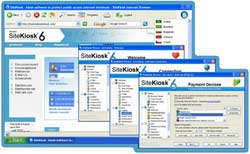Representatives from the four most popular web browser development companies in the world recently met and reached an agreement on implementing several changes to their products to make web browsing safer and more reliable.
 The main goal of the meeting between developers of Internet Explorer, Firefox, Opera, and Konqueror in Toronto on November 17 was to discuss measures against phishing and to enhance security for their products over the next eight months.
The main goal of the meeting between developers of Internet Explorer, Firefox, Opera, and Konqueror in Toronto on November 17 was to discuss measures against phishing and to enhance security for their products over the next eight months.
Among the changes that will be implemented in the browser versions discussed during this meeting is a plan to create a notification method for users to know whether they are browsing a trustworthy website or not, as well as some modifications to pop-up windows.
The developers hope to see their products capable of changing the address bar color to green whenever users visit a highly trusted website, similar to how the Firefox browser currently operates – the address bar turns yellow and displays a lock icon if the user visits a website using secure protocols like HTTPS. Conversely, if a user visits a phishing website or any site suspected of phishing, the browser will change the address bar color to red, similar to the approach that will be applied in Internet Explorer 7.
To achieve this, developers will need to create a different electronic authentication method – a topic that is currently under discussion. Electronic authentication can be understood as an electronic ID card for each website aimed at proving the true ownership of that website. Is it trustworthy? At this meeting, browser developers agreed to create a type of electronic authentication with higher assurance. Meanwhile, the current electronic authentication mechanisms seem inadequate in ensuring user safety, as these authentications can be obtained through “forgery.”
Regarding pop-up windows, during this meeting, browser developers agreed that in the future, these windows will not have an address bar or status bar, making them less likely to be confused with operating system notification dialogs, thus avoiding user confusion.
Overall, the meeting achieved certain successes. However, all of this remains in the conceptual stage. Users will still have to wait for the practical implementation.


















































